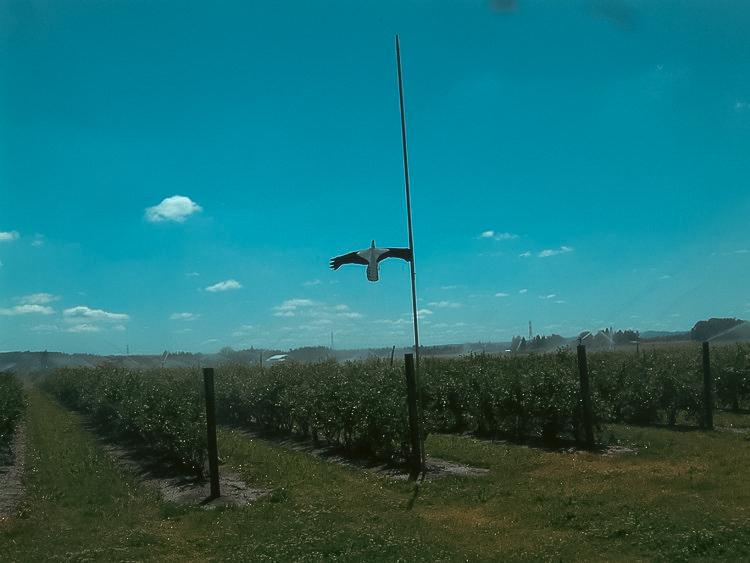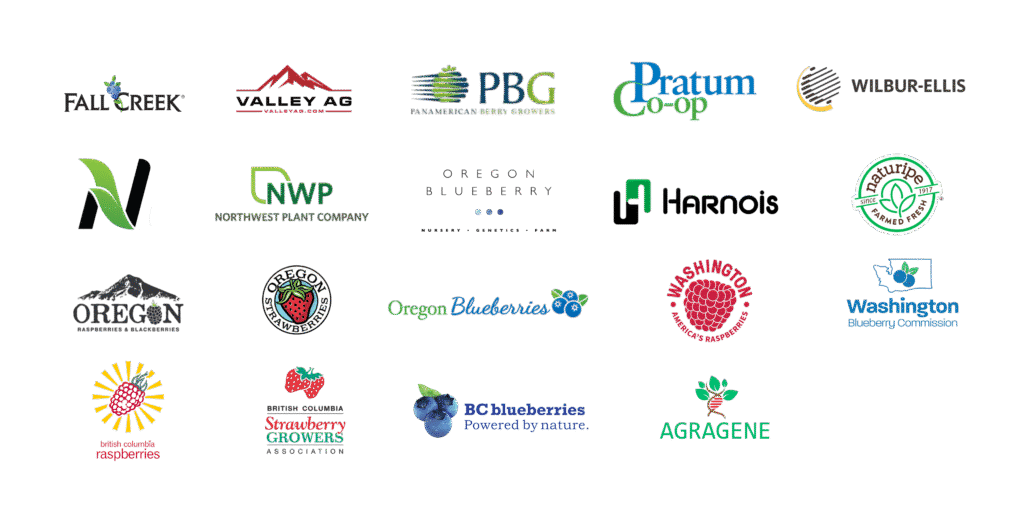Bird control
Getting Started with Bird Control
Identifying bird pest problems, bird management programs, identifying the species causing the problem and general bird control tips.

Indicators of a bird pest problem
- Flocks from a grower who has bird problems may fly into an adjacent grower’s field.
- Isolated geography- if a grower’s crop is the only one around and has no adjacent farms or dairies, birds might see it as the single food source.
- Grower has adjacent dairy, granary or other crop that produces at a different time of year. Birds may simply shift from one crop to another as they ripen.Flocks from a grower who has bird problems may fly into an adjacent grower’s field. Isolated geography- if a grower’s crop is the only one around and has no adjacent farms or dairies, birds might see it as the single food source. Grower has adjacent dairy, granary or other crop that produces at a different time of year. Birds may simply shift from one crop to another as they ripen.
Steps to building a bird management program
Bird damage in blueberries.
Evaluate the severity of a pest bird problem
- As a grower, you don’t have a way to measure how many berries birds have eaten that never make it to the processing plant, but you can have a pretty good idea of how many ton per acre to expect to get by learning the average yield of your variety(ies), as well as the age and field conditions of your blueberries before pest birds enter the equation. For fresh market growers, a proper estimation may be even harder to come by because berries don’t go through a processing plant.
- Flock size remains one of the tell-tale indicators of crop loss. A grower can see bird damage in his field and make an educated guess based on ratio of damaged fruit to healthy fruit per bush.
Identify the species causing the problem
- Know what bird species are problematic and the characteristics of those birds. Robins, for example, may be present in your field but do not, in general, have the same potential for economic damage as starlings.
- Once you establish the pest bird species you need to target, take note of what might attract these pest birds besides your blueberry crop. Are there neighboring crops that end as blueberries begin?
- Note whether or not pest birds come in to the field annually or sporadically. If they don’t seem to be a problem every year, what factors might be causing them to migrate your way? A change in weather? An earlier or later blueberry harvest? A change in your bird abatement program? A change in what your neighbor or you have planted nearby?
- Consistent pest bird flock size year after year may indicate that something is drawing these birds to your area. If flocks are small one year and huge the next, then weather, change in adjacent crops or crop management may be a factor.
Decide how much management is warranted
Deciding the effectiveness of each repellent can be difficult. The capriciousness of nature prevents mathematical formulas from accurately predicting next year’s bird damage. However, you can estimate based on your own experience and observations, and refer to other indicators, such as past studies, to give you an idea for the efficacy of different bird management measures. For netting or durable equipment such as cannons or distress callers, the duration of the technique needs to be factored in as well.
A grower can calculate cost effectiveness based on: estimate fruit prices for the year, the number of fruit days at risk, the number of pest birds you expect to determine how many days you will need bird management, what you can afford, or how detrimental the damage might be.
You can make a general calculation on the cost effectiveness of a control based on: cost and effectiveness of each repellent you use, value of the crop, and loss to birds if the crop was not protected.
For example, if you are a grower with a berry crop yielding $10,000 per acre, and you expect this year’s loss to birds without treatment to be 20% of your crop. Based on prior experience or the knowledge of reputable sources, you consider the bird repellent you are considering to be 50% effective.
20% of $10,000 is $2,000, which gives you the cost of your estimated bird damage per acre.
If the repellent is 50% effective, it should, theoretically prevent half the amount of damage, or $1,000 worth of damage per acre.
This means that the repellent should cost less than or equal to the amount it would save you, or no greater than $1,000 per acre to be considered cost effective.
Bird damage in black raspberries.
Decide optimal management methods
Northwest fruit and berry growers try many tools to get rid of pest birds: canons, bird calls, shiny objects, scarecrows, guns, kites, rejex-it, chemical repellents, netting and traps. Each comes with its own set of advantages and disadvantages.
In the case of using raptors for bird management, the risk of potential profit loss without proper bird management may make the cost of abatement falconry a smart investment. If a grower has tried previously ineffective methods, has neighbors who don’t like the noise of other techniques, has environmental concerns, or a desire to market his farm better, abatement falconry may be a serious consideration. To assess the cost of abatement falconry, see the Abatement Falconry Business Models page.
Design a management plan
Each grower has to take into account individual considerations. Designing a management program when using raptors does not involve many considerations that would differ from things you might consider for other types of bird management. When designing a management plan with raptors consideration the following:
fruit prices for the year.
number of fruit days at risk.
number of starlings or pest birds.
size of your property.
number of raptors you’ll need to patrol your farm, if using falconry.
topographic layout and natural boundaries of your farm
hot spots on the property that will require the most attention.
Fields located on flat terrain or in valleys are useful to raptors because there are no shadows or hills for pest birds to hide in. The more a raptor can see, the more it can control, which means the more effective it will be at bird management.
Contiguous acreage is easier for a raptor to cover than land that is broken up by tree line. In noncontiguous fields, the falconer and raptor may have to drive around the tree line to arrive at rest of the field.
The number of crop varieties you have.
A grower with several vulnerable varieties that ripen at the same time they may require longer hours and more attention than crops or crop varieties that do not ripen at the same time.
Execute a management plan and evaluate its effectiveness
Bird management strategy must begin before fruit ripens, feeding habits of birds become established, and/or before birds begin nesting. Once the pest birds have nested they are not going to leave their young; however, a raptor can haze them to the point that the adults will forage elsewhere and spend minimal time in the crop until their chicks are gone, at which point they leave. Once the first batch of juvenile pest birds come, they are easier to deter as they are still trying to figure out how and when to forage. Over time the birds become desensitized. Food is their ultimate goal, and they’ll tolerate a lot of hazing to get to it. As the number of flocks increase, the more difficult they will be to deter.
A bird management strategy may be considered effective when:
swarms of birds are not visibly flying over fields
adjacent growers have bird problems, but you do not
a low level of fruit coming into a processing plant is discarded due to bird damage
